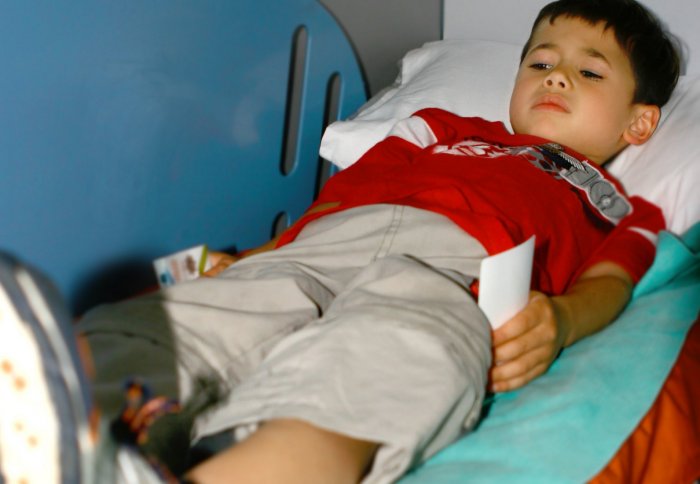

Many parents and carers of children with severe allergies have difficulty using devices to inject adrenaline effectively, according to new research.
An extreme and rapid allergic reaction, known as anaphylaxis, can result in swelling of the throat and mouth, difficulty breathing, collapse and loss of consciousness. An adrenaline auto-injector (AAI) can reverse these and other symptoms if it is used correctly.
The new study shows that children who suffer from anaphylaxis are at risk of their treatment failing. Conducted by researchers at Imperial College London, it involved 158 children with severe food allergies and their mothers, who were given training in how to use an AAI.
Six weeks after training, more than half of the mothers were unable to use an AAI effectively in a scenario using a dummy.
Dr Robert Boyle, a Clinical Senior Lecturer in Paediatric Allergy at Imperial, believes that the design of AAIs is confusing for those who need to use them. “The design is not intuitive, especially in stressful situations where for example a child suddenly has difficulty breathing, or loses consciousness due to an allergic reaction to food,” he said at today’s meeting of the British Society for Allergy and Clinical Immunology.
"It is easy for parents and carers to panic when their child has a severe allergic reaction, and so more effective training in how to administer adrenaline is essential. The design of AAIs is gradually getting better but it is still not completely obvious how to use one, taking into account the stress and suddenness of the situation. Manufacturers must make more effort to design the AAI with the parent in mind at a time when they and the child are scared,” said Dr Boyle.
The mothers involved in the study were taught using an AAI trainer device and were given written information, a consultation with a nurse and a treatment plan, as well as access to a relevant website.
Six weeks later, the volunteers returned for a further assessment of their ability to use the AAI and were filmed in a typical scenario, using a dummy: over lunch the dummy child starts coughing and wheezing, demonstrating the signs of a severe allergic reaction. The mother gives the dummy child the adrenaline shot, administers basic first aid and calls the ambulance.
More than half of the volunteers (58 per cent) were unable to use an AAI effectively. The most common problem was that they did not remove the relevant caps. Others could not activate the AAI or did not use the correct end of it. Using the incorrect end occasionally resulted in the mothers injecting themselves with the adrenaline instead of the dummy.
AAI devices currently cost the NHS around £15 million a year. Dr Boyle’s team plans to carry out further long-term follow up to see if repeated training improves people’s ability to use an AAI.
Lynne Regent, the CEO of Anaphylaxis Campaign, said: “This study highlights the importance of effective training and practice with trainer AAI’s so if an emergency situation did occur it can be managed optimally.”
The Anaphylaxis Campaign provides online training called AllergyWise, which explains how to spot the signs of a severe reaction and gives step by step management instructions.
The research was funded by Lincoln Medical and the National Institute for Health Research.
Article text (excluding photos or graphics) available under an Attribution-NonCommercial-ShareAlike Creative Commons license.
Photos and graphics subject to third party copyright used with permission or © Imperial College London.
Reporter

Laura Gallagher
Communications Division

Contact details
Tel: +44 (0)20 7594 6701
Email: l.gallagher@imperial.ac.uk
Show all stories by this author
Leave a comment
Your comment may be published, displaying your name as you provide it, unless you request otherwise. Your contact details will never be published.




Comments
Comments are loading...